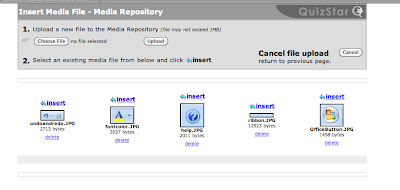Relevant and Innovative Learning Scenarios Planning
Creating a Flash Website With Wix!
1. Target Audience -
· Five 7th grade students that are participating in the PA Middle School Computer Fair
· (*These students will be working in groups of two and three)
2. Materials -
· Two MacBook Pro laptop computers
· Content for website creation
· PA Middle School Computer Fair Web Page Scoring Guidelines
· PA Middle School Computer Fair Web Page Design Category Rules
· Internet Connection
3. Objectives -
· The students will be able to…
o Describe what makes a good website.
o Explain how the judges’ scoring rubric will be used to evaluate their web pages.
o Create a flash website with navigation, interesting content, and media.
4. Procedure -
· The teacher will explain the rules for the web page category at the PA Middle School Computer Fair by looking at the PA Middle School Computer Fair website.
· The students will be shown the PA Middle School Computer Fair Scoring Guidelines so that they understand how their project will be judged.
· The students will gather their content(pictures, videos, information) for their websites.
· The students will sign up for a free Wix account. (Students that do not have permission to create an account can use the teacher’s account.)
· The students will be introduced to the Wix Flash website creator screen layout.
· The students will learn the different tools in the Wix website creator.
· The students will explore the different types of templates available in Wix.
· The students will use their content to create a Flash website from a template or from scratch.
· The students will learn how to publish their completed sites.
5. Web 2.0 Tool -
6. Social Participation/Social Learning -
· The students have already formed two groups to compete at the PA Middle School Computer Fair in the Web Page Design category.
· One group has two students and the other group has three students.
· In each group, all students will be working on all parts of this project together. They will all gather content, and they will all help create the website on Wix.
· Students will work together during after school work sessions for the PA Middle School Computer Fair.
7. Making Connections –
· Connecting previous knowledge with new knowledge – The students that will be working on this project have already learned how to create simple websites with Microsoft Word and Publisher and PowerPoint. Now they will be learning one method that can be used to create a Flash website with more interactive content.
· Creating a website and publishing it to the World Wide Web is an inherently global activity.
· By entering their completed websites in the PA Middle School Computer Fair, the students will also get a taste of real world competition.
8. Create/Produce –
· The students will be creating working Flash websites.
· These projects will be shared in two ways:
o World Wide Web - global audience
o PA Middle School Computer Fair – similar students in the state/judges who are industry professionals
9. Assessment –
· This assessment will work by comparing the students’ projects with the blocks on the rubric to see where it fits in. The goal will be to have the students’ projects match with the maximum point column on the rubric.
10. Reflection –
· Students – The students will reflect on their completed website by reviewing the judges comments on their scoring rubrics after the PA Middle School Computer Fair is over and the forms are mailed back to our school. I will have the students reflect by holding a formal meeting and discussion with all students that participated.
· Me – I will be reflecting on this project on my blog. I will discuss how well the Web 2.0 tool worked for my learning audience and how well it created a real world product. I will also be commenting on the success of the project and how much the students enjoyed it.

















































